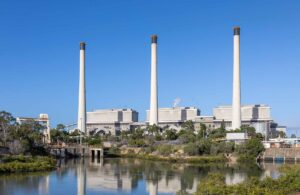A new assessment of the Coalition government’s climate change policies says Australia will fall well short of its “inadequate” Paris climate targets, and will likely increase emissions by nearly as much as it has promised to cut them.
The assessment from Climate Action Tracker says that Australia’s target falls well short of the effort needed to limit warming to below 2°C, let alone the stronger aspirational target of 1.5°C that was included in the Paris Agreement.

“If most other countries followed the Australia approach, global warming would exceed 3°C to 4°C,” the report says.
The Climate Action Tracker report is not the first to highlight Australia’s pathetically inadequate climate policies, nor will it be the last. A slew of reports is expected in coming days and weeks as the Paris Agreement comes into force from Friday and new climate talks begin in Marrakesh in Morocco on Monday.
Australia is likely to be questioned intensely by many countries, including its major trading partners, over its climate policies, particularly the effectiveness of its Direct Action policy, which prime minister Malcolm Turnbull has embraced despite ridiculing it before replacing Tony Abbott as leader just over a year ago.
Fairfax Media reported last month that China, the US and other countries have put more than 30 questions to the Turnbull government, asking for detail about how Australia will meet its 2030 emissions target and raising concerns about a lack of transparency over how the government calculates and reports emissions.
The Australian government has admitted it has not even modelled the impact of its own policies and whether they would reach their target, and it is unclear whether a promised 2017 review will lead to new policies or simply be a “situation report” on the current trajectory.
Others have done the modelling, though, which shows it comes up short. The Climate Change Authority has said previously – before its board was stacked with Coalition government appointees – that the Coalition’s target was well below what could be considered Australia’s “fair share”.
It says that Australia’s target should be 40 to 60 per cent below 2000 levels by 2030 (or around 45-65 per cent on 2005 levels, compared to the current target of 26-28 per cent).
The Climate Institute has said that with current targets, Australia’s per capita emissions in 2030 would be around three times higher than global per capita emissions benchmarks that are consistent with Paris Agreement objectives.
Australia, though, is not the only country to be dragging its heels. A new report to be released late Thursday will confirm that the world needs to lift its efforts because current policies are falling 25 per cent below what is required to meet the Paris target.
The Less Developed Country block on Wednesday said that the current Paris pledges have the world on course for 3-3.5°C of warming above pre-industrial levels. It wants stronger action, particularly from developed nations.
![]()
The problem with Australia is that it is unclear whether it can meet its own inadequate INDC (Intended Nationally Determined Contribution), the pledge lodged in Paris last year.
“To meet its 2030 emissions targets, Australian emissions should decrease by an average rate of 1.9 per cent per year until 2030; instead, with current policies, they are set to increase by an average rate of 1.2 per cent per year,” the Climate Action Tracker report says.
It also adds to questions around the Emissions Reduction Fund, which it says will not set the country on a path to meet its targets and may only be funding emission reduction projects that would have occurred anyway.
Under present policy settings, the report says, Australia’s emissions are set to substantially increase to more than 21 per cent above 2005 levels by 2030, equivalent to an increase of around 52 per cent above 1990 levels.
“Without accelerating climate action and additional policies, Australia will miss its 2030 target by a large margin, a conclusion supported by other analysts,” it notes.
“Of particular concern is the reversal of a declining trend in CO2 emissions from coal-fired power stations following the removal of the carbon pricing and nascent emissions trading scheme and related legislation in the middle of 2014.
“As a consequence, emissions from electricity production, which had been covered by the scheme, are rising again while the federal government continues to create political uncertainty on the future of renewable energy.
“The federal government has questioned the efficacy of renewable energy and called for one state (South Australia) that had recently closed its last coal-fired power station to reopen it.
“To meet its inadequate 2030 emissions targets, Australian emissions need to decrease by an average annual rate of 1.9 per cent until 2030; instead, with current policies, they are set to increase by an average rate of around 1.2 per cent a year, dramatically illustrating the dichotomy between climate rhetoric and climate action. “
Australia’s INDC includes a target of reducing GHG emissions, including land use, land use change and forestry (LULUCF), by 26–28 per cent below 2005 levels by 2030.
After accounting for LULUCF, this target is equivalent to a range of around 5 per cent below to 5 per cent above 1990 levels of GHG emissions, excluding LULUCF in the year 2030. “We rate this target “inadequate”,” the Climate Action Tracker report says.
“It is not in line with most interpretations of a “fair” approach to reach a 2°C warming limit, let alone with the Paris Agreement’s stronger 1.5°C limit: if most other countries were to follow the Australian approach, global warming would exceed 3–4°C.
Share this:
- Click to share on Facebook (Opens in new window) Facebook
- Click to share on X (Opens in new window) X
- Click to share on LinkedIn (Opens in new window) LinkedIn
- Click to share on Reddit (Opens in new window) Reddit
- Click to email a link to a friend (Opens in new window) Email
- Click to print (Opens in new window) Print








